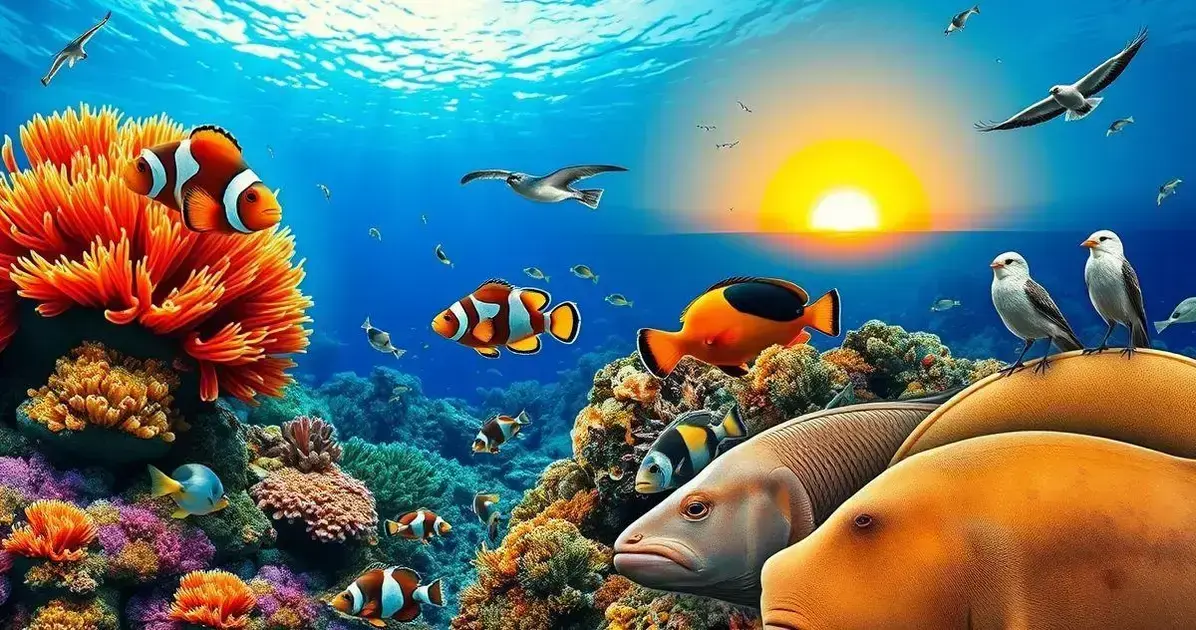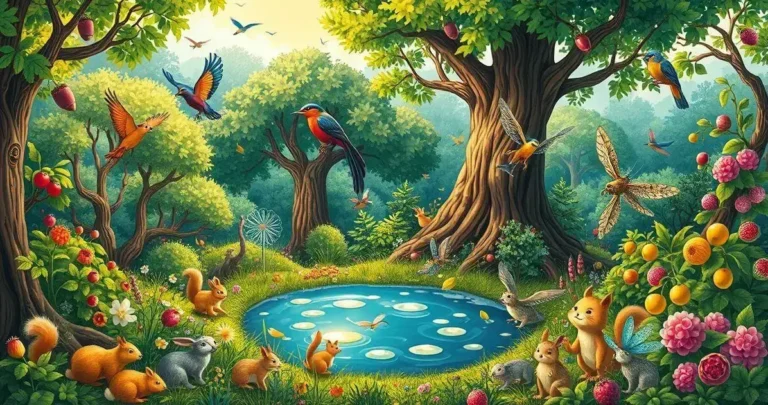Announcements
Symbiotic Relationship is the key to understanding how different species interact and support each other in nature. These connections shape ecosystems, influencing survival and balance in the wild.
From mutually beneficial partnerships to one-sided advantages, symbiosis takes many forms. Mutualism, commensalism, and parasitism each play a unique role in the natural world.
Curious to see real-life examples of these fascinating relationships? Keep reading to explore how Symbiotic Relationships impact life on Earth!
Announcements
What is a Symbiotic Relationship?
A symbiotic relationship is a close interaction between two different species, where both benefit from the relationship. This concept is essential in the study of ecology as it helps explain how different organisms coexist and interact in their environments. There are several types of symbiotic relationships, including mutualism, commensalism, and parasitism.
Mutualism is when both species involved gain benefits. For instance, bees and flowers have a mutualistic relationship where bees get nectar for food while helping to pollinate the flowers.
Announcements
Commensalism occurs when one species benefits while the other is neither helped nor harmed. An example is barnacles that attach themselves to whales. The barnacles gain a ride to various feeding grounds, while the whale remains unaffected.
Parasitism, on the other hand, involves one species benefiting at the expense of the other. This can be seen in relationships between parasites and their hosts, such as ticks feeding on the blood of animals.
Understanding these relationships is crucial for appreciating the natural world and the balance within ecosystems. Every interaction forms a part of a larger web of life that sustains various species and their habitats.
Types of Symbiotic Relationships
There are three main types of symbiotic relationships that demonstrate how different species interact in nature. Each type varies in how both organisms benefit or are affected.
1. Mutualism: In mutualism, both species gain from the relationship. For example, the relationship between oxpeckers and rhinos benefits both. The birds eat parasites off the rhino’s skin, getting food, while the rhino gets pest control.
2. Commensalism: Commensalism occurs when one species benefits and the other is neither helped nor harmed. A clear example is the way epiphytic plants, like orchids, grow on tree branches. They receive sunlight and rainwater without affecting the tree.
3. Parasitism: Parasitism is when one species benefits at the expense of the other. An example of this is tapeworms, which live in the intestines of their hosts, often causing health problems without providing any benefit to the host.
These interactions highlight the complexity of nature and how species can adapt to thrive together. Understanding these types helps us appreciate the delicate balance in ecosystems.
Examples in Nature

Examples of symbiotic relationships in nature showcase the diverse ways organisms interact to survive and thrive. Here are some notable examples:
1. Clownfish and Sea Anemones: Clownfish live among the tentacles of sea anemones. The fish gain shelter and protection from predators, while the anemones receive food scraps from the clownfish and benefit from the fish’s movement, which helps circulate water around them.
2. Cleaner Wrasses and Larger Fish: Cleaner wrasses are small fish that feed on parasites and dead skin from larger fish, like groupers. This mutual relationship benefits the wrasses with food and provides the larger fish with cleansing and improved health.
3. Birds and Large Herbivores: Certain birds, like oxpeckers, perch on the backs of large herbivores, such as buffalo. The birds eat ticks and other parasites, making the animals healthier while receiving a reliable food source.
4. Lichens: Lichens are a combination of fungi and algae. The fungus provides structure and protection to the algae, while the algae conduct photosynthesis, supplying nutrients to the fungus. Together, they thrive in environments where neither could survive alone.
5. Termites and Protozoa: Termites depend on protozoa in their guts to digest cellulose from wood. The protozoa benefit by getting a habitat and a constant food source, enabling the termites to break down tough materials efficiently.
These examples illustrate how complex and essential symbiotic relationships are in maintaining the balance of ecosystems.
The Importance of Symbiosis
The concept of symbiosis plays a crucial role in the health of ecosystems and the survival of various species. Here are some reasons why symbiosis is important:
1. Ecosystem Stability: Symbiotic relationships contribute to the stability of ecosystems. By allowing different species to coexist and support one another, these interactions help maintain balance within food webs and habitats.
2. Nutrient Cycling: Symbiosis aids in the cycling of nutrients. For example, certain fungi that form symbiotic relationships with plants help them absorb vital minerals from the soil, which in turn supports both organisms.
3. Biodiversity: Through symbiosis, species can diversify and adapt better to their environments. This increases biodiversity, making ecosystems more resilient to changes and disturbances.
4. Health and Survival: Many species depend on symbiotic partners for their survival. For instance, many herbivores rely on gut bacteria to digest tough plant materials. These relationships enhance the health of the organisms involved.
5. Evolutionary Processes: Symbiosis can drive evolution. Close interactions can lead to co-evolution, where species adapt in response to changes in their partners, promoting genetic diversity.
Overall, the significance of symbiosis in nature cannot be overstated. It shapes the way organisms interact, affects ecosystem health, and influences evolutionary pathways.
How Symbiotic Relationships Evolve
Symbiotic relationships evolve through various mechanisms that allow species to adapt to their environments and interactions with other organisms. Here are some key factors that drive the evolution of these relationships:
1. Natural Selection: Over time, natural selection favors traits that enhance the success of symbiotic partners. For instance, plants that develop deeper roots may gain better access to nutrients while providing more support to their symbiotic fungi, creating a beneficial cycle for both.
2. Environmental Changes: Changes in the environment can lead to new symbiotic relationships. For example, climate changes can shift habitats, prompting species to form new partnerships for survival or resource acquisition.
3. Co-Evolution: Symbiotic partners often undergo co-evolution, meaning they evolve in response to each other. For instance, predators and prey often influence each other’s adaptations, leading to improved survival strategies for both parties.
4. Genetic Variation: Genetic diversity within populations can provide the necessary variations for new symbiotic relationships to form. A change in one species’ genetic makeup can lead to new interactions and functions within ecosystems.
5. Behavioral Changes: Species may alter their behaviors to maximize the benefits of symbiosis. For example, some birds may modify their foraging behaviors to enhance cleaning services for larger animals, ensuring their relationship remains beneficial.
The evolution of symbiotic relationships is a dynamic process that showcases the resilience and adaptability of life in nature. Understanding these mechanisms helps us appreciate how interdependent life forms can thrive through collaboration.
The Future of Symbiotic Interactions

The future of symbiotic interactions holds exciting possibilities as our understanding of ecology and interspecies relationships evolves. Here are some key factors that may shape the future of these connections:
1. Climate Change: As climate continues to change, many species will adapt or form new symbiotic relationships to survive. This could lead to new partnerships that help optimize resource use in changing environments.
2. Urbanization: With increasing urbanization, animals and plants may develop novel symbiotic interactions in urban spaces. For example, city-dwelling species may rely on human activities for survival, leading to unique adaptations.
3. Conservation Efforts: Protecting and restoring habitats will encourage symbiotic relationships to flourish. Active conservation programs can help maintain the balance between species and the environments they thrive in.
4. Research and Technology: Advances in technology and research methods will enhance our ability to study and understand symbiotic interactions. This knowledge will help us develop strategies for preserving biodiversity and ecosystem health.
5. Human Impact: As humans have a significant impact on ecosystems, being mindful of our actions will be crucial. Creating sustainable practices can promote healthy symbiotic relationships that benefit both nature and humanity.
The future of symbiotic interactions invites us to explore how life forms will adapt together, reflecting the interconnectedness of all living things. Recognizing these relationships will be vital for sustaining our planet’s health.
In Summary: Understanding the Power of Symbiotic Relationships
Symbiotic relationships are essential to the balance of our ecosystems, highlighting the interconnectedness of life on Earth. By examining the types of symbiotic interactions, such as mutualism, commensalism, and parasitism, we gain insight into how species collaborate for survival.
As we explore examples in nature, the importance of these relationships becomes clear. They not only support ecological stability but also promote nutrient cycling and biodiversity. Understanding how symbiotic relationships evolve through natural selection and environmental changes can help us appreciate the dynamic nature of life.
Looking forward, the future of symbiotic interactions presents opportunities for new partnerships amid challenges such as climate change and urbanization. By recognizing and respecting these interactions, we can ensure a sustainable future for all living organisms.
Ultimately, the study of symbiotic relationships encourages respect for the complex web of life that supports our planet.







